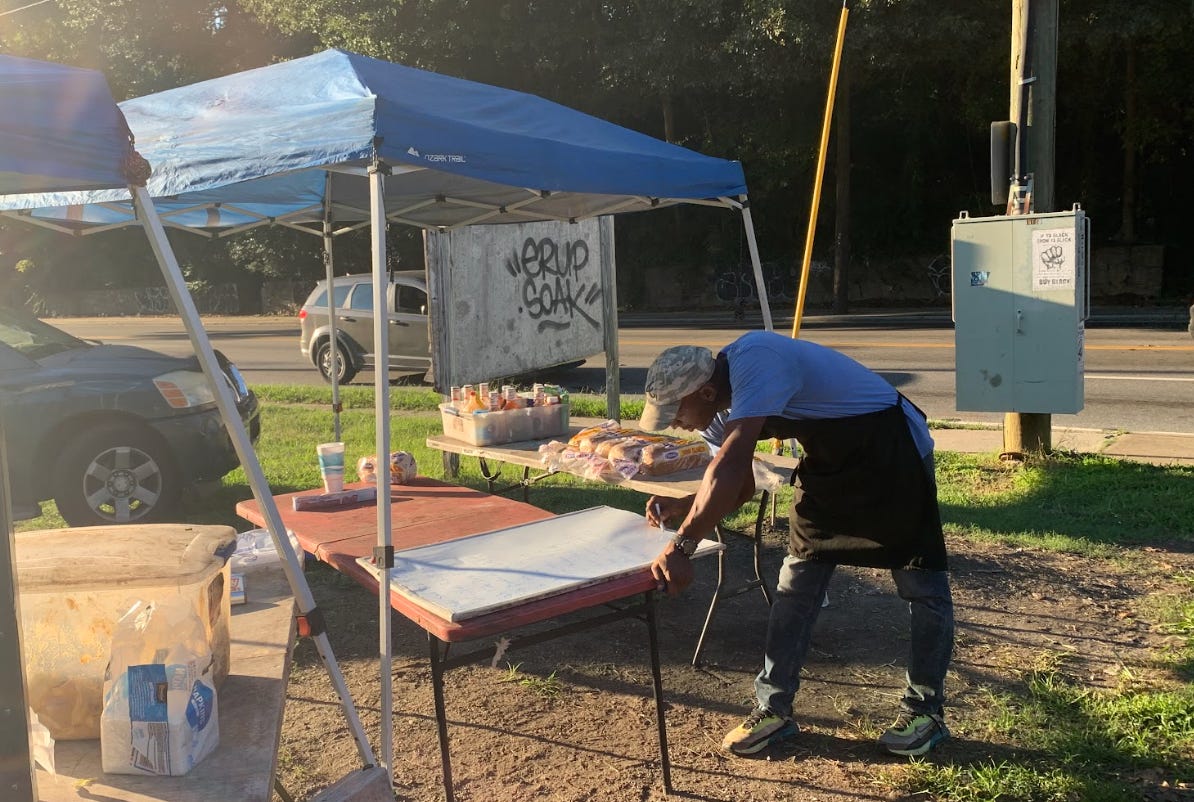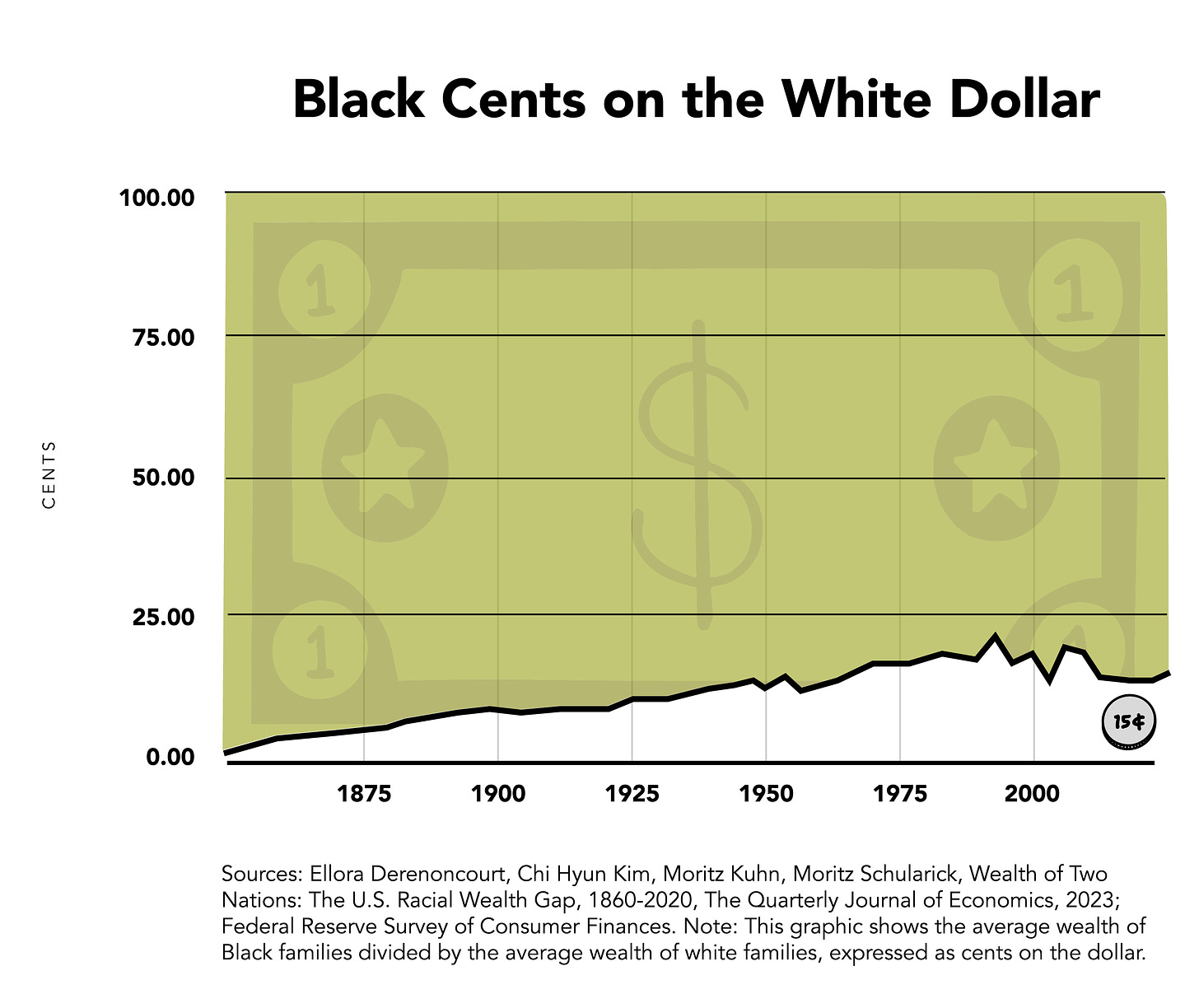Meet James Lovelace
Introducing the final main person we feature in our bestselling book, "Fifteen Cents on the Dollar"
This is James Lewis Lovelace. He hunches over the table at his BBQ stand alongside a gas station across the street from his old home. Unlike Tandreia Dixon, Brook Bacon, and James Woodall — three individuals in our book we introduced already — Lovelace did not go to college and does not work in the professional space.
Our book follows Lovelace through a battle to keep his home. It’s a home he loved so much that he bought it two different times. It’s in the Bankhead neighborhood of Atlanta, famous as the home of the late rapper Shawty Lo.
Lovelace called his BBQ stand, “BBQ Shawty.”
We hope you’ll get to know Lovelace better in the pages of our book … along with Tandreia, Brook, James, and also the rapper Killer Mike, Civil Rights leader Andrew Young and businessman Ryan Glover. They and their families have stories that will keep you reading through the important history and present-day reality chronicled in our book.
Trying to make a dollar out of 15 cents.
Since our book, “Fifteen Cents on the Dollar: How Americans Made the Black-White Wealth Gap,” came out, we have had some questions from various readers about the connection of our title to a common phrase in rap music that talks about trying to make a dollar out of 15 cents.
Rap music is reflected a bit in our book, in part tied to our large, original profile of Michael Render, who raps under the name Killer Mike. But it’s also reflected in the interests in some of the other people we feature. There’s plenty of rap music that includes references to economic disadvantages that are tied to the Black-white wealth gap.
The title of our book comes from data from the Federal Reserve. The latest wealth gap data came out in October 2023 and it showed that typical Black families had 15 percent the wealth of typical white families. The 15 percent is true when you compare the wealth of the median Black family with that of the median white family. And it’s true when you compare the average wealth of Black families with the average wealth of white families. So it’s that data that led us to focus in on fifteen cents on the dollar. We often show a graphic of a dollar bill that shows the gap overtime, and you can see the Black-white gap will only be gone when that 15 cents is turned into a dollar, so there’s 1:1 parity of wealth.
All that said, the term “fifteen cents” and the concept of turning 15 cents into a dollar is an old concept. It’s in rap songs by Tupac and Master P.
In “Keep Ya Head Up & I Get Around,” Tupac rapped, “I'm tryin' to make a dollar out of fifteen cents. It's hard to be legit and still pay your rent..” And Master P has a song entitled, “Tryin’ to Make a Dollar Out of 15 Cents” that repeats the phrase throughout.
There isn’t evidence in the lyrics of those songs that the rappers were comparing “15 cents” to a white-wealth basis of a dollar. They may have, instead, been talking about the difficulty of building up capital when you have so few funds.
Or, they may have been referring to nursery rhymes they heard as children. The 15 cents line also dates to a nursery rhyme from the 1800s about Chinese people. The rhyme was changed overtime and became a rhyme in some Black communities. Both varietals — which carry negative connotations — cited the idea of “trying to make a dollar out of fifteen cents.”
(Special thanks to Clive Davis, who is featured in our book, for raising these questions up to us recently.)
We hope that 15 cents on the dollar takes on new meaning in society as people read our book. It is our number one goal to make this statistic a nationally-recognized figure.
Book and Travel Updates.
We have criss-crossed the country since February, visiting a dozen cities to share our research and to shine a light on people in local communities. You can see more about all of our events here.
We have a virtual event we are participating in coming up. Join us on the night of July 11. You can register for free here.
There has been strong interest in our book. The book is on USA Today’s Bestseller List, and it has been featured on Morning Joe, Squawk Box, CBS, NBC, ABC, Amanpour, Yahoo Finance, and numerous podcasts like Pete Domenick and The CuriousMans Podcast.
Thank you for helping us spread the word on our book, and for your many great e-mails to us. Feel free to reply to this note with thoughts anytime.
We are grateful.
-Louise and Ebony




